#class: le mans hypercar
Explore tagged Tumblr posts
Text




#poll#smash or pass#smash or pass poll#tumblr polls#class: le mans hypercar#prototype class#le mans prototype#timeline: 2020s#aston martin valkyrie amr lmh
8 notes
·
View notes
Text
Heartbreak in the 2.0 Sports Class at the 1966 24 Hours of Le Mans
Perhaps it's understandable given that we're coming off the Rolex 24 at Daytona, but I've been on a bit of an endurance kick lately, and I've come across a story that, while painfully, incredibly, niche, I actually found pretty fascinating. It's the heartbreaking story of a car that survived 24 fearsome hours of 1960s Le Mans...only to fail in the very last laps and miss out on the finish.
Our story takes us to the 1966 24 Hours of Le Mans, a race infamous for the battle between Ford's GT40 and Ferrari's 330 P3, however, there was another story brewing in the background: the rise of Porsche.
Ferrari had dominated the early 60s, Ford would take the late 60s with their GT40 winning four in a row, but in 1970, Porsche would breakthrough and take their first win at Le Mans before going on to become the dominant force of the 1980s.
For 1966 though, it was still early days for the Porsche project. Nevertheless, they already possessed some of the numbers that would make future Porsche efforts famous:
3 factory Porsche 906/6 LH "longtails" in the 2.0L Prototype class.
2 factory Porsche 906/6 Carrera coupes in the 2.0L Sports class.
1 privateer Porsche 906/6 Carrera coupe in the 2.0L Prototype class.
And a privateer 911S in the 2.0L GT class for good measure.
Wait a second...why so many different classes? Why do most of those cars seem to be the same model? Why is one Carrera 6 in the Prototype class while the other two are in the Sports class?
Well, the short answer is that old school Le Mans was complicated.
These days there's a clear distinction between classes: Hypercar is the fastest, LMP2 in the middle, and then GTs. Back then though, it was more of a chart - there were Prototypes, Sports Cars, and GT cars.
Prototypes were dedicated racing machines, Sports Cars, meanwhile, were a bit of an odd area, in that there was a 50-car homologation and these cars needed to have all the equipment necessary to be road legal (but as far as I can tell, there was no requirement to actually sell 50 road cars or anything, not yet at least). GT cars, meanwhile, were the actual sports cars for the road modified for racing use.
The other axis of the chart, meanwhile, is displacement. For 1966, there were 1.15L entries, 1.3L entries, 1.6L entries (though none showed up), 2.0L, and then we skipped all the way up to the 5.0L and the 5.0L+ classes.
In Porsche's case, all their cars were powered by a 1991cc Flat-6, meaning that they conformed to the 2.0L class in Prototype, Sports, and GT.
As for the 906, well, they produced the 50 906 Carrera 6s necessary for homologation, but for Le Mans, they brought the longtails. The 906/6 LH, with a monstrous rear overhang - I don't typically use pictures in these blogposts because of image rights, but look up a picture of it, it's hilarious - streamlined specifically for the mighty Mulsanne straight.
So, these 906/6 LHs were leading the charge, and they were up against a trio of Dino 206 prototypes - with Ferrari's 1986cc V6 - but our story focuses on the 906 Carrera 6s.
The #33 Porsche driven by American Peter Gregg and Swede Sten Axelsson, and the #58 driven by Germans Gunter Klass and Rolf Stommelen.
These were, quite literally, the only entries in the 2.0L Sports class. Ford had five GT Mk. 1s (in addition to their eight Prototype Mk. 2s and a sixth GT MK. 1 that didn't make the race) but those were in the 5.0L class, meaning that they weren't competing with Porsche.
Not that it mattered, considering that none of the Mk. 1s finished the race.
So yeah, quite literally two cars competing for the win, and they were strong too.
With the big cars falling away one by one, the Porsches were getting closer and closer to the front, and all five of the factory Porsche System Engineering entries were running in the top then. Thus, as Ford was planning their three-car photo finish for the overall win, Porsche was planning on a five-car photo finish just behind them.
Then...disaster struck.
Shortly after his last pitstop, Peter Gregg, then in seventh place, started experiencing an engine issue.
This must've been within the last hour of the race, probably forty-five to thirty minutes left, and the #33 car had completed a mighty 321 laps, but they were failing so close to the end of the race. In an attempt to make the finish, Peter Gregg parked the car in the pits and waited for the clock to tick down and the Fords to cross the line, figuring that he could at least nurse the car home for one final lap.
The #58 Porsche was still out there, making laps and taking the class lead as well as seventh place overall, but with the Germans on 330 laps and the next car on track being a Ferrari 275 GTB car in the 5.0L GT class on just 313 laps, Gregg could still finish in the top ten at Le Mans and be part of a five-car Porsche photo finish.
So, on the last lap, Peter Gregg tried to restart the car and complete one final lap...but it wouldn't turn over.
He missed the photo finish, and he missed the finish completely.
321 laps done, but he couldn't get it over the line to finish the race.
Thus, Porsche had to content themselves with a four car 4-5-6-7 finish, while Peter Gregg and Sten Axelsson earned the heartbreaking distinction of retiring of engine issues...24 hours into the race.
With none of the GT40 Mk. 1s making the finish and all three Dinos out early in the race, this means that the Klass/Stommelen car was the only Sports entry of any kind to finish the 1966 24 Hours of Le Mans.
So yeah, Peter Gregg and Sten Axelsson...they were on for a class win and a photo finish for Porsche, only to run into a heartbreaking engine issue at the very end of the race. From class lead and seventh overall to a DNF.
To add insult to injury...that one 911 did make the finish, completing 284 laps for a 14th place finish.
Less laps but...they finished the lap that counts: the last one.
17 notes
·
View notes
Text
What speaks for a Le Mans start?
Sebastian Vettel could compete in Le Mans with Porsche as early as 2024. The former Formula 1 world champion impressed in the first test. There are increasing signs of a racing comeback for the German. Porsche has postponed the planned announcement of the driver pairing of the third car for Le Mans.
Sebastian Vettel was abstinent for fifteen months. Apart from a few demonstration laps in a Williams FW14B at Silverstone and a Red Bull RB7 at the Nürburgring, the four-time world champion stayed away from the race track, but the thoroughbred racing driver regularly admitted that he misses racing. That's why his name was mentioned again and again when an attractive door opened-or seemed to open-in Formula 1, just like at Mercedes next year. The transfer of Lewis Hamilton to Ferrari frees up a cockpit at Mercedes, and of course Mercedes team boss Toto Wolff and Vettel were already in contact. The Heppenheimer also has his eye on the World Endurance Championship (WEC) with Porsche. On March 21st, Vettel took part in the roll-out test of the third Le Mans car in Weissach. The 36-year-old shared the cockpit with Porsche works driver Laurens Vanthoor. The Belgian drove two stints of twenty laps each, after which Vettel took over the Porsche hypercar for several runs between ten and fifteen laps.
Vettel fast straight away
According to information from our sister magazine, Motorsport aktuell, Vettel was on the same lap time level as Vanthoor after just fifteen laps. First conclusion: Vettel was immediately competitive at raw speed, and he also impressed with good feedback. The second stage of the test plan was then initiated: Vettel and five other works drivers will take part in a 36-hour test at the Spanish Motorland Aragón racetrack from March 25th to 27th, which was planned as preparation for Le Mans. The test is intended to evaluate how the 53-time GP winner copes with the 700 hp LMDh car in the dark. Vettel wants to use the test to find out whether the LMDh class cars will rekindle the fire in him. With a curb weight of 1,030 kilograms, the hybrid racers are significantly heavier than a Formula 1 car and have less power, but with hybrid technology and biofuel, they fit into the green world view of the man in the cockpit. The first impression behind the wheel of the Porsche 963 already left a clear mark on the thoroughbred racing driver from Heppenheim: "I'm looking forward to testing the Porsche and have already had the opportunity to get to know the car a little in Weissach. I've always had other racing series, and my curiosity for long distances encouraged me to just give it a try. Now I'm excited about the endurance run in Aragón and am looking forward to my time behind the wheel. It will definitely take some adjustment and some getting used to, but the whole team is very open and helps me with that. We'll see what happens next. At the moment there are no further plans for the future."
Porsche postpones driver announcement
After that, at the latest, a decision must be made as to whether Vettel will be included in Porsche's Le Mans squad. The Penske team will compete at Le Mans in 2024 with three cars: the two WEC cars plus an additional 963, which so far only has Mathieu Jaminet named. The original plan was for Jaminet to share the Porsche with Felipe Nasr and Nick Tandy. The trio should have been confirmed this week on Thursday, March 28, but that announcement was postponed. This suggests that there is a real chance that Vettel could still jump on the Le Mans bandwagon. The Heppenheimer is still keeping the ball low: "We'll see how things continue. At the moment there are no further plans for the future." Theoretically, it would be possible for Vettel to contest one of the two World Championship races in Imola or Spa, although not with the works cars, but with the two customer teams, Proton Competition or Jota Hertz Racing. Vettel would obviously like to drive a test race because this is the only way to optimally prepare for a race at Le Mans. As expected, there is no doubt about Vettel in terms of driving, but a test race would allow him to get a feel for the demanding traffic situation in endurance racing, where the fast hypercar top cars share the track with the much slower GT3 cars.
Further Porsche tests possible
Because of the great competition in the field, the sports prototypes are now the second most attractive racing series in the world. In Aragon, Vettel also gets to know the competition straight away. It's not just Porsche that is preparing for Le Mans. Alpine with Mick Schumacher has also registered on the Spanish route. If everything goes well, Vettel could complete a third test soon: Porsche will drive in Spa on April 5th and 6th, and there is also the possibility of another 36-hour test on April 10th and 11th at the French track Le Castellet, even if Porsche has not yet officially registered for the test. The decision on a Le Mans start must be made by mid-April at the latest. The Porsche board is said to be enthusiastic about the idea of Vettel driving with Porsche at Le Mans as early as 2024.
Porsche against seven manufacturers
The Stuttgart team won the first race of the season in Qatar with the 963. The WEC is enjoying particular attention this year because eight manufacturers are represented: Porsche, Ferrari, Toyota, Peugeot, BMW, Cadillac, Alpine and Lamborghini. The 24 Hours of Le Mans is even more than usual one of the big motorsport highlights of the year. Another large car company, Aston Martin, is expected to join in 2025. There are persistent rumors about a McLaren entry. For Porsche, Vettel's testing is a prestigious experience. The example of Alonso at Toyota and Hülkenberg at Porsche shows what advertising value the deployment of a Formula 1 driver on foreign terrain can have. Thomas Laudenbach, Head of Porsche Motorsport, is pleased that the former champion is showing interest in Porsche's long-distance activities: "There was no question for us that we would be happy to support his request for a test opportunity and provide him with extensive preparation and sufficient time. We can certainly learn a lot from his valuable feedback. Our 36-hour endurance run with our factory drivers in Motorland Aragón offers a perfect environment for this."
#this is a bad google translate y'all sorry#sebastian vettel#f1#formula 1#wec#fic ref#fic ref 2024#not a race#2024 not a race#between australia and japan 2024#nico hulkenberg#fernando alonso#smick#testing#aragon
66 notes
·
View notes
Video
youtube
The 24 Hours of Le Mans is by far the most prestigious event in endurance racing. For 2025, the Hypercar category brings together the most advanced hybrid prototypes ever developed, with entries from global manufacturers under two distinct rule sets: Le Mans Hypercar (LMH) and Le Mans Daytona h (LMDh).
These are the top contenders for the 2025 24 Hours of Le Mans, machines that represent the forefront of hybrid endurance racing technology.
The BMW M Hybrid V8. Built under LMDh rules, it features a 4.0-liter twin-turbo V8 paired with a standardized hybrid system. Power is electronically capped at 680 horsepower, as per class regulations. Built on a Dallara chassis, BMW joined the WEC in 2024, aiming for overall victory in 2025.
The Ferrari 499P, a factory-built LMH car. It uses a 3.0-liter twin-turbo V6 mid-mounted, coupled with a front-axle hybrid motor for all-wheel drive. Like all entries in this category, it produces a combined 680 horsepower. After winning Le Mans in 2023, Ferrari remains a key contender.
The Aston Martin Valkyrie AMR-LMH enters in 2025. Based on the road-going Valkyrie, it features a high-revving 6.5-liter naturally aspirated V12 developed by Cosworth and a hybrid system. Despite the unique powertrain, total output stays within the regulated 680 horsepower limit.
Porsche’s 963 runs under LMDh regulations. It uses a 4.6-liter twin-turbo V8 derived from the RS Spyder, paired with a spec hybrid system, delivering a combined 680 horsepower. The chassis is supplied by Multimatic, and the car continues Porsche’s legacy in endurance racing.
Peugeot’s 9X8 brings bold design choices, most notably a no-rear-wing aerodynamic concept. It’s powered by a 2.6-liter twin-turbo V6 and a front-mounted electric motor. Like its LMH rivals, it runs with 680 horsepower and all-wheel drive above 150 kilometers per hour.
Toyota’s GR010 Hybrid has been the benchmark since 2021. It features a 3.5-liter twin-turbo V6 and a front-mounted electric motor, activated above certain speeds. The hybrid system helps deliver exactly 680 horsepower, balancing reliability and performance.
The Cadillac V-Series.R, competing under LMDh rules, uses a 5.5-liter naturally aspirated V8. It’s paired with the standardized hybrid system and mounted on a Dallara chassis. Known for its durability and aggressive sound, power is limited to 680 horsepower.
The new Alpine A424 is Alpine’s first LMDh entry. It’s powered by a 3.4-liter turbocharged V6 and a spec hybrid unit, built on an Oreca chassis. Like its competitors, the A424 is tuned to the FIA-mandated 680 horsepower limit. Designed in collaboration with Signatech, it marks Alpine’s serious push for overall victory.
All nine of these prototypes are engineered to deliver maximum performance within tightly controlled regulations. With equalized power outputs and diverse philosophies in aerodynamics and hybrid integration, the battle for Le Mans 2025 is all to execution, efficiency and endurance.
6 notes
·
View notes
Text




We've been talking about the hypercars of the late-80s and early 90s just a few days back so today, we'll talk about Jaguar's 90s hypercar, the XJ220.
Pic from left to right, top to bottom in zigzag pattern: Production XJ220 on display -> Prototype XJ220 with the V12 showing -> The prototype's Jaguar V12 engine -> A race-prepped XJ220S
Jaguar all along had been racing in various events and across the late 70s and 80s, they partnered up with different companies, one being Group 44 and the other being Tom Walkinshaw and his company for their racing efforts. Tom Walkinshaw handled their GT side of things whereas Group 44 handled their prototype racecar side of things.
Group 44 and Jaguar would produce the XJR-5 in 1982 for the IMSA GT Championship under the GTP Prototype class till 1985. It won a few races but it wasn't anything special. Jaguar and Group 44 would then switch to the newer XJR-7 in 1985 and the results was also mediocre. 1987 saw Jaguar switched their main racing partnership to Tom Walkinshaw for their upcoming 1988 IMSA GTP efforts and this time, FIA Group C Championship. The car would debut at the 24 Hours of Daytona and won the race outright. However, that was the only time the car won at IMSA. The car did perform better overseas though that it not only won the prestigious 24hrs of Le Mans, it won 6 other races helping both Tom Walkinshaw Racing/TWR and Jaguar clinch the overall champion title for the 1988 season. The difference between the IMSA and the FIA Group C car is that the IMSA car uses the 6L V12 they retained from the XJR-7 whereas the Group C car uses a newer and more powerful 7L V12.
Prior to the XJR-9, Jaguar and TWR had already produced an XJR-8 in 1987 which also won that year's championship for the FIA Group C Championship thus TWR hatched a plan to produce a road car based on these cars. Jim Randle, the then-Jaguar chief of engineering started the project and he decided to base the project as the same concept of the 50s and 60s like the old Jaguar D-Type where you can race the car at Le Mans and also drive it on the streets. However, Jaguar early on didn't really see the project as feasible and didn't give Jim much help thus he had to round up volunteers across the office floors to help him sketch the design of the car and general ideas for the project on their off times thus the team would be nicknamed as "The Saturday Club" consisting of 12 volunteers.
With their tenacious attitude, the team managed to get the job done by designing the car on based on the old Group B rules and he crunched the cost down to the maximum by pulling deals with past suppliers and companies that had worked with Jaguar before. With Jaguar finally seeing that it would work, gave the greenlight. Jim would then design the car to be clad with full aluminium body parts to keep the weight light and also to bring back the sentiments of the old XJ120 and coupled with that concept, he planned to make the new car to be the fastest production vehicle of its time upon launch just like the XJ120 and for that, he planned for the car to do 220mph thus he christened the car as "XJ220". Jim would also decide to slot one of the spare V12 leftover from the XJR-9 racecar in the concept car and descaled the engine from 7L to 6.2L and mated it an AWD drivetrain. However, Jaguar had no idea on how to implement it as they've never built anything AWD before thus they went to the company that helped Jensen with their AWD FF, FD Development ran by Tony Rolt. The concept would even feature rear-wheel steering which was very high tech during that period of time. The concept was completed on 18th October 1988, the very same day it was set to appear at the British International Motor Show and Jaguar rushed the car to be presented to the public. Upon revelation, customers raved about the cars and many would dump blank cheques at the counters to order one, helping Jaguar to decide that it was indeed feasible to produce it and in the end, Jaguar got over 1500 orders at the unveiling and slated the production car to be ready by 1992.
Jaguar would not be able to produce the car themselves but lucky for them, they already had a sub-company with TWR called JaguarSport which they used to build their racecars with and thus, Jaguar would ask TWR to help them in building the car. Production of the car would commence by the middle of 1989 but soon, trouble would hit. Upon testing from loaned Ferrari F40 and Porsche 959, the team soon realized that the XJ220 was longer and heavier than both of them and the V12 engine was way heavier than both the turbocharged V8 and flat-6 that both the Ferrari and Porsche would respectively use. To make matters worse, a recession hit in 1990 which sank the economy and Jaguar was hit by it too. With finances tied to the development of their normal road cars, they can't sink more money into the XJ220 project so alot of things had to be changed to keep cost down. 1st to go was the V12 and they had to find new engine to switch to. Just their luck, TWR had earlier in 1989 purchased the right to build the very same engine that was used in the MG Metro 6R4 for their upcoming racing efforts and with no other option, they decided to put the engine in the car. TWR would bore the engine out to 3.5L and slap two turbos which now makes 542hp to match the power figures of the V12 that they were supposed to use. In return of using the V6, the car's rear was shortened and overall, lighter than the concept car. The 2nd stuff to be dumped was the AWD system to turn it back to the RWD drivetrain that Jaguars were more used to and the final item was the rear-wheel steering as they found it to have not much real need for it and so was the active aero and height adjustable dampers to save production cost and also overall weight.
When the news of the changes were leaked to the public, the mood immediately changed and customers felt cheated that the end product they were getting isn't the same as advertised and with a few of them being broke due to the recession, many would pull out from their purchase. What Jaguar did was even scummier that they changed the car soo much from the concept and didn't tell their customers who had put downpayment for the car, they instead told their customers that the only way they can get a refund was to buy themselves out and obviously, customers were unhappy and sued the company for fraudulent advert and the issue wasn't resolved until 1995. Regardless, Jaguar still made 281 units in total from 1991-1994.
The car would be tested in 1991 by the press and also attempt to follow the XJ120's record for being the fastest production vehicle. For that, Jaguar took it to the Nardo Ring in Italy and brought their racing driver, Martin Brundle together with independent reviewers and witnesses for the Guinness World Records with journalists from Car magazine, Road & Track and Top Gear. The prototype had already done a shakedown session before the production model and the pre-production model did 212mph/341kmh at Fort Stockton, Texas. During the shakedown at Nardo, Jaguar did wanna break the 220mph mark but despite how much Martin Brundle tried, he could only achieve the same speed at the Fort Stockton run but that was with the catalytic converter on. Jaguar would quickly remove it and push the car for another run where it did better with 217mph/349kmh but still not 220mph as intended. Regardless, it was still recorded as the fastest production car ever built for that time till the McLaren F1 came about and took the crown.
However, the journalists that tested the cars gave very conflicting sentiments. All of them would praise how the car has immense power despite the twin-turbo V6 unit and how quick it was to climb up to speed. The all would, unsurprisingly, complained about the length of the car and at certain times feel very unrefined due to the lack of any creature comfort like power steering, ABS and traction control due to Jaguar literally saving pennies to save themselves from sinking. They would also complain about how the V6 felt lumpy at the lower rev ranges and the clutch feeling way too heavy for a road car and driving it in the city was extremely torturous. Time didn't treat the car well either as it didn't hold itself well with age as modern fans who test drove the car again would also like the engine at its highest rev ranges but hated the car at low speeds and also disliked how the reliability, as typical of any British car of its time, wasn't stellar at all and the financial situation of Jaguar and British Leyland in general exacerbated the problems even more.
After close to 3 decades, Jaguar would attempt to reinvent a new hypercar for the 21st century with the C-X75 but with the commercial failures of the XJ220, they cancelled the project before it had a proper workable prototype and for me, that was a massive waste in my opinion.
5 notes
·
View notes
Text
Schumacher's attitude a 'positive surprise', says WEC team-mate Lapierre
Sportscar racing veteran Nicolas Lapierre says he was "positively surprised" by Alpine team-mate Mick Schumachers attitude from the first day the German stepped into a World Endurance Championship hypercar.
Former Haas Formula 1 racer and current Mercedes reserve Schumacher showed a desire to adjust himself to the multi-driver format of sportscar racing instead of going out for individual glory, according to four-time Le Mans 24 Hours class winner Lapierre. "When Mick came to his first test, it was in Jerez," said Schumacher’s Alpine teammate, Lapierre. "For me, when drivers come in from single-seaters, even more Formula 1, there are two options. Either he wants to be a real sportscar driver, share the car and work with his teammates, or he just wants to shine. I was very positively surprised with Mick since day one. He really wanted to work as a team, and it suits him quite good, as well. And his pace was straight away very fast. This we knew [already]; we had no doubt about this. The only thing now is to have a little bit of traffic management and this kind of stuff, because this is very new [to him]." Schumacher first got a chance to test the Alpine A424 LMDh last October and impressed the French manufacturer enough to earn a seat in its line-up for the 2024 season, joining team stalwarts Lapierre and Matthieu Vaxiviere aboard the #36 car. Prior to his Hypercar move, the German driver spent two seasons competing in F1 with Haas from 2021-22, scoring a best finish of sixth on his second visit to the Red Bull Ring for the Austrian Grand Prix. He remains on Mercedes' books in a reserve role in 2024 and, if required, can be called in by the Brackley-based squad even on WEC race weekends. Lapierre believes Schumacher's experience of working with the title-winning Mercedes F1 squad helps bring a new perspective to the Signatech-run Alpine team. "He is bringing some good stuff from Formula 1 because he is working with one of the best teams on the Formula 1 grid," he said, "so this brings us some fresh ideas, some new feedback, which has also been very helpful in this project." Schumacher spent the 2023 season on the sidelines after being dropped by Haas in 2023 in favour of countryman Nico Hulkenberg, electing not to compete in any other category during his first year out of F1. The German driver reiterated that he is looking for comeback opportunities in grand prix racing, but made it clear his current focus is on his Hypercar programme with Alpine. "I'm here now. What the future holds is quite difficult to predict and foresee," said the 24-year-old. "Obviously my focus for now is WEC, but I would be lying if I would say that I don't have an eye on Formula 1. There are a lot of things happening right now. Who knows what opportunities are presented to myself in a couple of months' time. I will deal with that when it's time." Schumacher, Lapierre and Vaxiviere finished twelfth overall in Saturday's opening round of WEC in Qatar, three laps down on the winning #6 Porsche Penske LMDh of Laurens Vanthoor, Kevin Estre and Andre Lotterer. Alpine stable-mates Paul-Loup Chatin, Ferdinand Habsburg and Charles Milesi scored points in eighth place aboard the #5 Alpine A424 to lead a successful return to Hypercar for the French manufacturer. "We had the pace to fight for the points, which was a bit unexpected, so we can be happy about it and proud of ourselves," said Schumacher. "It’s great the sister car managed to score."
#mick schumacher#f1#formula 1#wec#fic ref#fic ref 2024#not a race#2024 not a race#between bahrain and saudi arabia 2024#between qatar and imola 2024
24 notes
·
View notes
Text
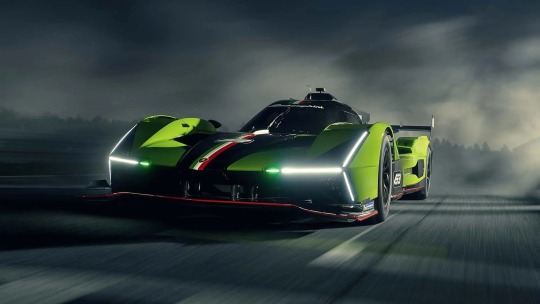
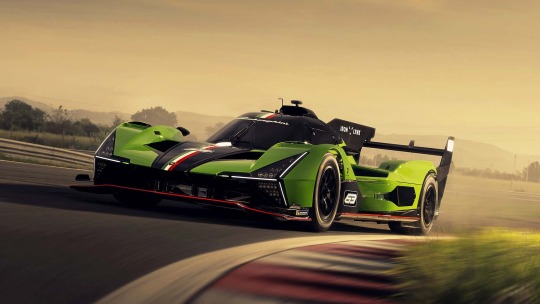
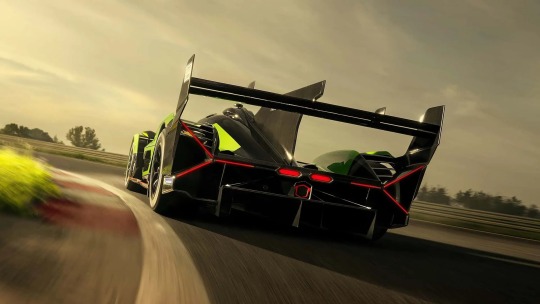
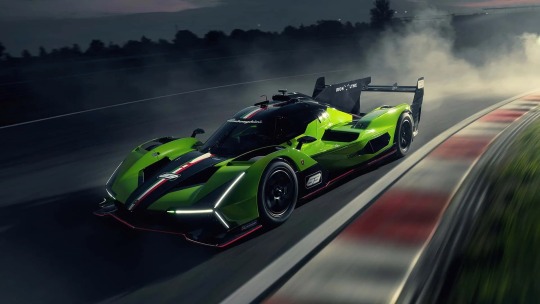
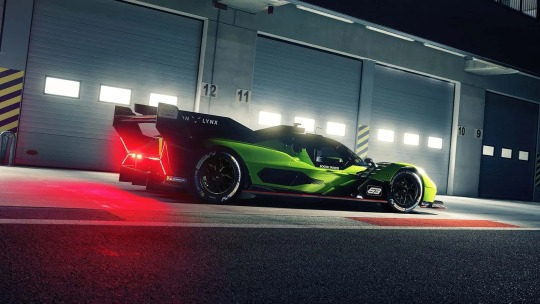
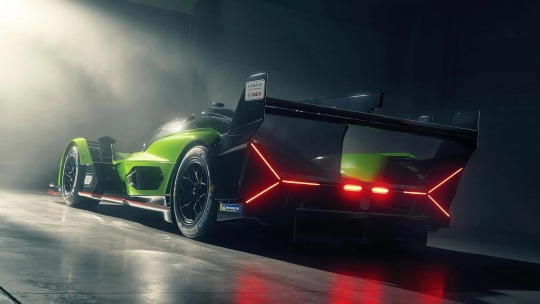
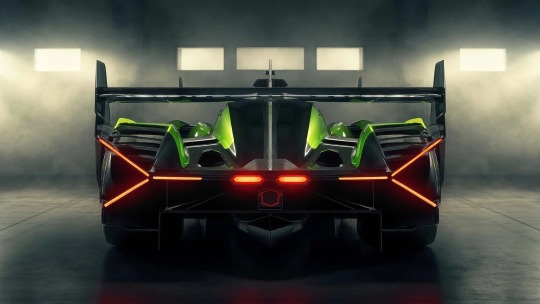

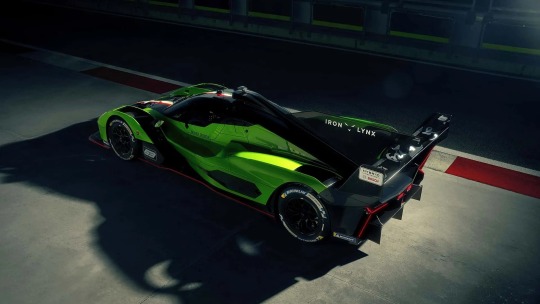
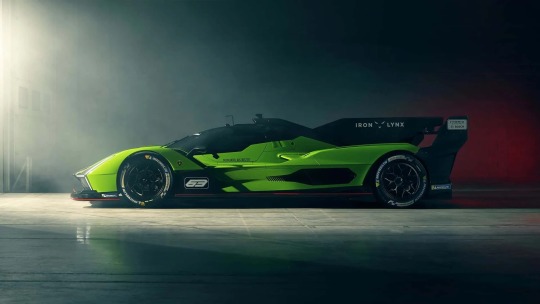


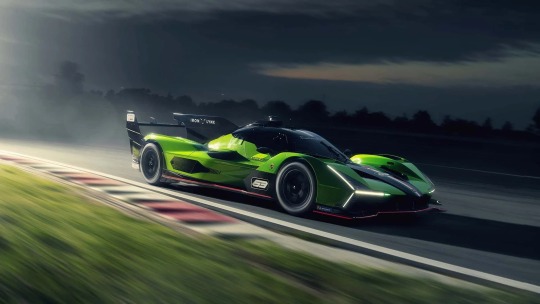
Lamborghini SC63
Lamborghini is set to compete at the top level of endurance racing starting in 2024, with an entry in the premier classes of the IMSA SportsCar Championship and FIA World Endurance Championship, known as GTP and Hypercar, respectively.
Lamborghini will enter one car in each of the full seasons of the SportsCar Championship and World Endurance Championship, meaning appearances at premier races including the 24 Hours of Daytona and the 24 Hours of Le Mans.
#art#design#supercars#luxurycars#supercar#luxurylifestyle#luxurycar#hypercars#hypercar#lambo#lamborghine SC63#le mans#daytona#IMSA#GTP
59 notes
·
View notes
Text
Just realised that hypercar quali and hyperpole starts like 10 mins after my last class so it might have to be a Kevin Estre Le Mans style lap to get home in time
2 notes
·
View notes
Text

Ferrari 499P at Rookie Testing in Bahrain
The Sakhir circuit in Bahrain hosted the rookie tests that traditionally wrap up the FIA World Endurance Championship season after the final race. Ferrari official drivers Lilou Wadoux and Robert Shwartzman had their first chance to climb on board the 499P that competed in the world championship, test-driving the Prancing Horse’s Le Mans Hypercar on the track. At the end of the day, which also saw Alessandro Pier Guidi enter the cockpit, Ferrari set the fastest time with Shwartzman.
Wadoux completed her first season as an official driver for the Maranello manufacturer by trying out the 499P number 51, the car that triumphed in the 24 Hours of Le Mans with Pier Guidi-Calado-Giovinazzi. It was a positive test for the 22-year-old Frenchwoman, who made motor racing history this year with her victory in the 6 Hours of Spa-Francorchamps – in the LMGTE Am class of the World Endurance Championship, with the Ferrari 488 GTE shared with Alessio Rovera and Louis Perez-Companc – a first win for a female driver in the FIA WEC era, which opened in 2012.
Both drivers completed a total of 30 laps: Wadoux managed to stop the clock in 1'49''488, while Shwartzman completed a lap in 1'48''559.
16 notes
·
View notes
Note
BMW M Hybrid V8 🥺




#poll#smash or pass#smash or pass poll#tumblr polls#class: le mans hypercar#prototype class#le mans prototype#bmw m hybrid v8#timeline: 2020s#bmw motorsport
8 notes
·
View notes
Text
Lamborghini reveals SC63 Hypercar which Grosjean and Kvyat will race in WEC | World Endurance Championship
Lamborghini has revealed the SC63, the car it has designed to contest the World Endurance Championship from next year. As part of its entry in the WEC’s Hypercar class, Lamborghini plans to enter two cars at next year’s Le Mans 24 Hours. The SC63 will also race in America’s IMSA series. The chassis was developed by Ligier and styled by Lamborghini’s design department, Centro Stile, to incorporate cues from its Revuelto road car. Romain Grosjean, Daniil Kvyat, Andrea Caldarelli and Mirko Bortolotti have already been confirmed among the marque’s drivers, with more due to be confirmed. The car is powered by a newly-designed 3.8-litre V8 twin-turbo and a standard hybrid system. The LMDh regulations limit the total power output to a maximum of 500kW. Lamborghini Chairman and CEO Stephan Winkelmann called the SC63 “the most advanced racing car ever produced by Lamborghini.” “The opportunity to compete in some of the biggest endurance races in the world with a hybrid prototype fits with our vision for the future of high-performance mobility, as demonstrated for road legal cars with the launch of the Revuelto. The SC63 LMDh is the step into the highest echelons and into the future of motorsports for our Squadra Corse.” The cars will be run by Iron Lynx. The first track test of the SC63 is due to take place next month. Iron Lynx team principal and CEO Andrea Piccini said they are “honoured and extremely excited” to “start a new chapter for Iron Lynx with Lamborghini.” “Everyone at Iron Lynx is eager for testing to get underway. This is undoubtedly one of the biggest challenges we’ve ever faced as a team, and we are now looking forward to seeing the SC63 on track.” Advert | Become a RaceFans supporter and go ad-free Gallery: Lamborghini SC63 WEC Hypercar Advert | Become a RaceFans supporter and go ad-free 2023 F1 season Browse all 2023 F1 season articles via RaceFans - Independent Motorsport Coverage https://www.racefans.net/
#F1#Lamborghini reveals SC63 Hypercar which Grosjean and Kvyat will race in WEC | World Endurance Championship#Formula 1
3 notes
·
View notes
Text
Vettel in talks with Jota Porsche team about 2024 WEC drive
Four-time Formula 1 world champion Sebastian Vettel is in talks with the Jota Porsche team about making a return to the cockpit in the World Endurance Championship next season.
Jota team principal Sam Hignett confirmed to Motorsport.com that the British operation has approached Vettel about joining its expanded two-car Hypercar class assault on the WEC in 2024 with a pair of Porsche 963 LMDh prototypes. Hignett stressed that discussions with the German about a WEC drive and an attack on the Le Mans 24 Hours remain at an early stage and that no deal has been done. "We are speaking to Seb, there are discussions, but nothing is done," he said. "There isn’t any kind of contract signed and he certainly hasn’t tested one of our cars." Vettel, who called time on his F1 career at the end of 2022, has refused to rule out the possibility of some kind of comeback. He declared that he remained race fit earlier this month and said over the course of a visit to Suzuka for last weekend’s Japanese Grand Prix that he misses "the amazing feeling" of driving an F1 car. But he poured cold water on a return to F1 in the short-term. Asked if he was considering a comeback, he said: "Not for now: F1 was the centre to my life for so long, but once you step out, you realise even more how big the rest of the world is, and how small in a way F1 is." Jota has made it clear that it is in a position to pick and chose the line-up for its second 963 and that it does not require funded drivers. The second car, like the first, will be backed by car hire giant Hertz in whose distinctive gold colours it races. Hignett alluded to the environmental credentials of Jota as being part of its pitch to Vettel, who unveiled a number of bee hotels at Suzuka as part of his ambassadorial role with the BeesandApple environmental project. "Sustainability is important to us as a team, which is why our hospitality unit at Le Mans was solar powered," he said. "We know that is important to Seb as well."
#AAAAAAAAAAAAAAAAAAAAAAA-#sebastian vettel#f1#formula 1#fic ref#fic ref 2023#not a race#2023 not a race#between japan and qatar 2023
22 notes
·
View notes
Text
Some current WEC (and a few IMSA) Rumours:
Vettel to Jota Porsche Hypercar
Vettel could drive for Jota in a Hypercar next season possibly alongside Kubica and Button. While another "Top EX-F1 driver" is also in consideration. Vettel is expected to test an Oreca 07 LMP2 with Jota soon. And has not denied the rumours but has said nothing is signed yet.
Mick Schumacher to Alpine
Mick Schumacher is in talks to race for Alpine in Hypercar next year. He's likely to test the car soon and could become a driver in one of their cars next year. Milesi, Vaxiviere and Lapierre have tested the new car already.
Rui Andrade to LMGT3 with a TF Sport Corvette
Currently in LMP2 with WRT, Andrade is not expected to race in Hypercar but could go to GT3. WRT will be running a BMW in the WEC GT3 class, but Andrade his name has mostly come up with TF Sport.
Ferdinand Habsburg has signed with a Hypercar manufacturer
According to his current teamboss, Vincent Vosse (WRT). Ferdinand Habsburg has signed with a Hypercar manufacturer, this manufacturer will not be BMW.
Daniel Juncadella to TF Sport with a Corvette
Current Mercedes Factory Driver Daniel Juncadella is likely to join TF Sport in the LMGT3 class. And would also join Corvette in the endurance races for the IMSA Championship.
Acura to Le Mans?
The Acura currently only racing in IMSA could be coming to Le Mans. Honda Performance Development will formally become Honda Racing Corporation USA (HRC US). And this is what they said about competing at in WEC (source: DailySportscar.com)
“I think we’ve always been pretty clear. We need to look at the WEC. We have an amazing, in my humble opinion, ARX-06, which has been the work of our team, ORECA have done a stunning job, and our race teams have done a stunning job. So we were smitten with our ARX-06.
They will not be joining in 2024 but possibly 2025?
Peugeot adds a rear-wing
The 9X8 will undergo a major upgrade for 2024. Their initial revolutionary no wing design has not been exactly competitive. For 2024 Peugeot will add a new rear-wing to the car. And will also change their tyre size. Currently they've been driving with a different tyre size than the rest of the grid and want to switch to the same size as everyone else.
Alex Albon to the 24H of Daytona with Wayne Taylor Racing
After it was initially announced that WTR would be running a current F1 driver during the 24H of Daytona rumours broke loose. However Marshall Pruett has confirmed this driver to be Alex Albon.
De Vries to Toyota in 2024
De Vries could be replacing Jose Maria Lopez in the Toyota drivers squad. The Dutch driver has a long-standing connection with the team and was meant to replace Lopez for the 2023 season already. But as de Vries signed a Formula 1 contract Lopez was retained but only on a single year contract.
Isotta Fraschini is evaluating a possible second car
Isotta will be joining the Hypercar grid with current LMP2 team Vector Sport next year. However Isotta is looking for a second customer to run a second car in WEC. This could be any one of LMP2 team Duqueine, or the Swiss GT squad Emil Frey Racing.
Jules Gounon and Jack Doohan tested an LMP2 recently
Gounon and Doohan recently tested an Oreca 07 with COOL Racing at Portimao recently. Doohan could be under consideration for an Alpine Hypercar seat. Gounon was fastest among several drivers and could be looked at by other Hypercar manufacturers.
Akkodis ASP in LMGT3 with Lexus?
ASP is known to want to join WEC as a customer team. This could be with Lexus and it has been revealed that if they're successful. That their current driver Timur Boguslavskiy is under consideration to continue with ASP if it switches to a WEC program.
35 notes
·
View notes
Text
McLaren Returns to Le Mans Glory with 2027 Top-Class Comeback | HARJA
"The iconic British automaker and legendary racing team has unveiled an exclusive offering sure to ignite competition among the ultra-wealthy."
✅️ Read More Here ⬇️⬇️⬇️
1 note
·
View note